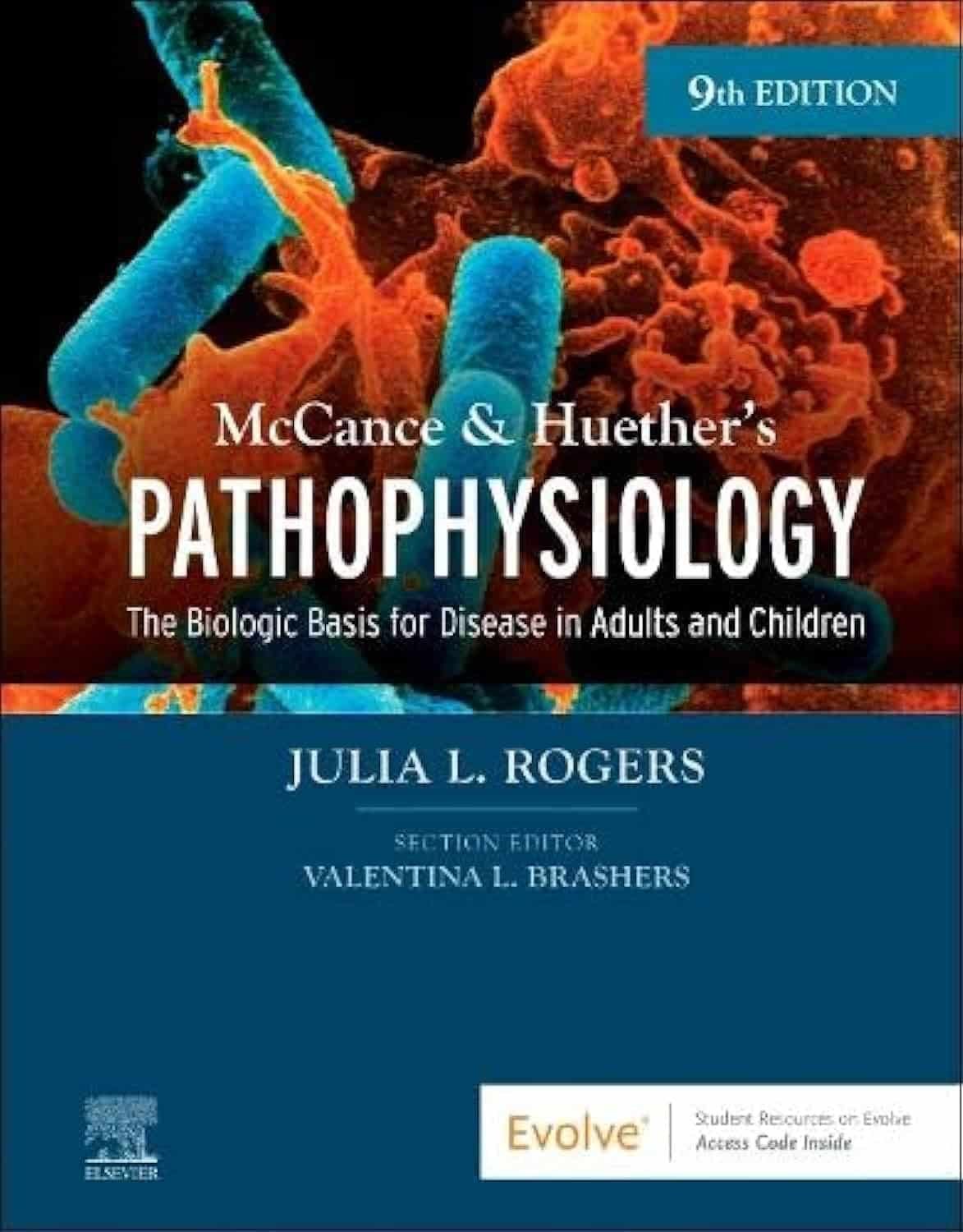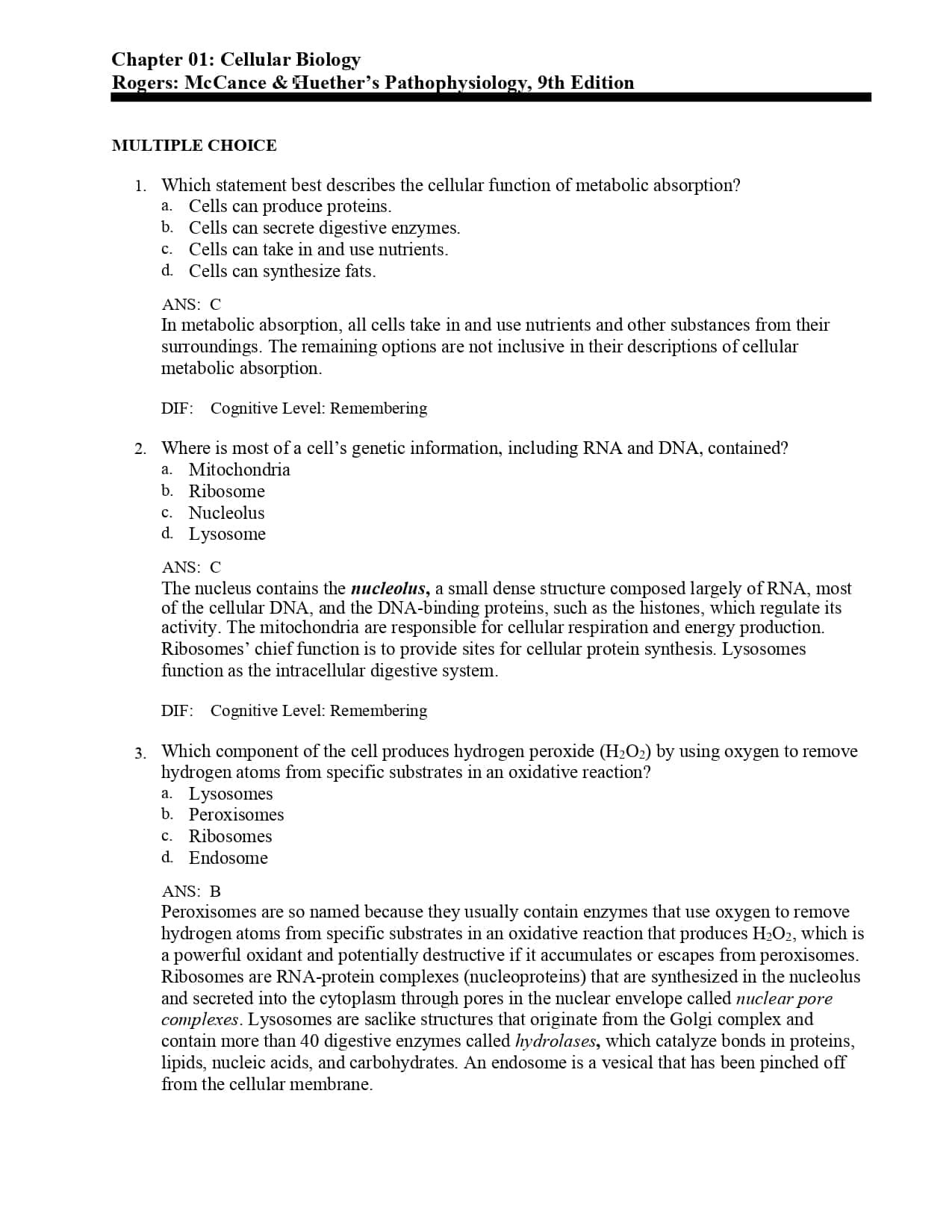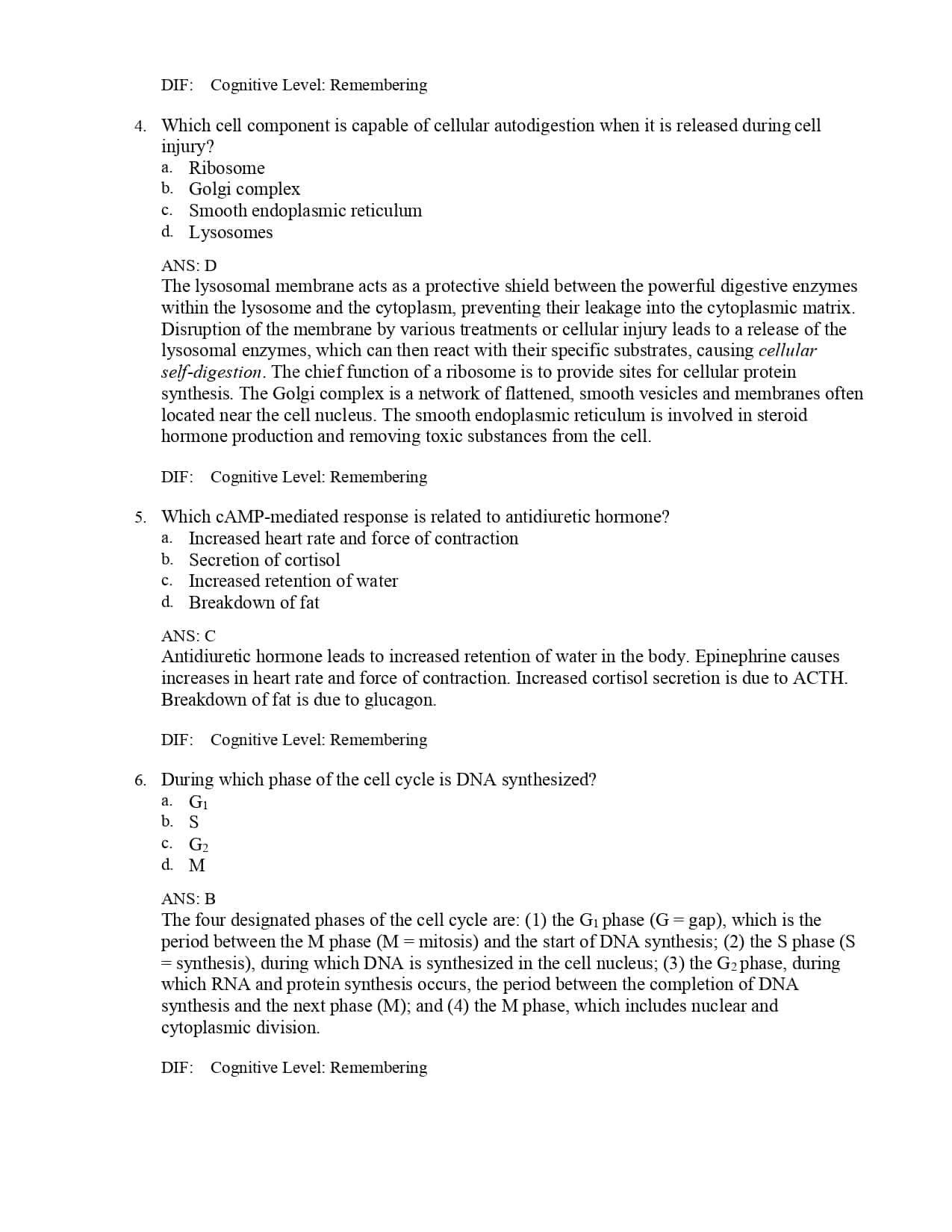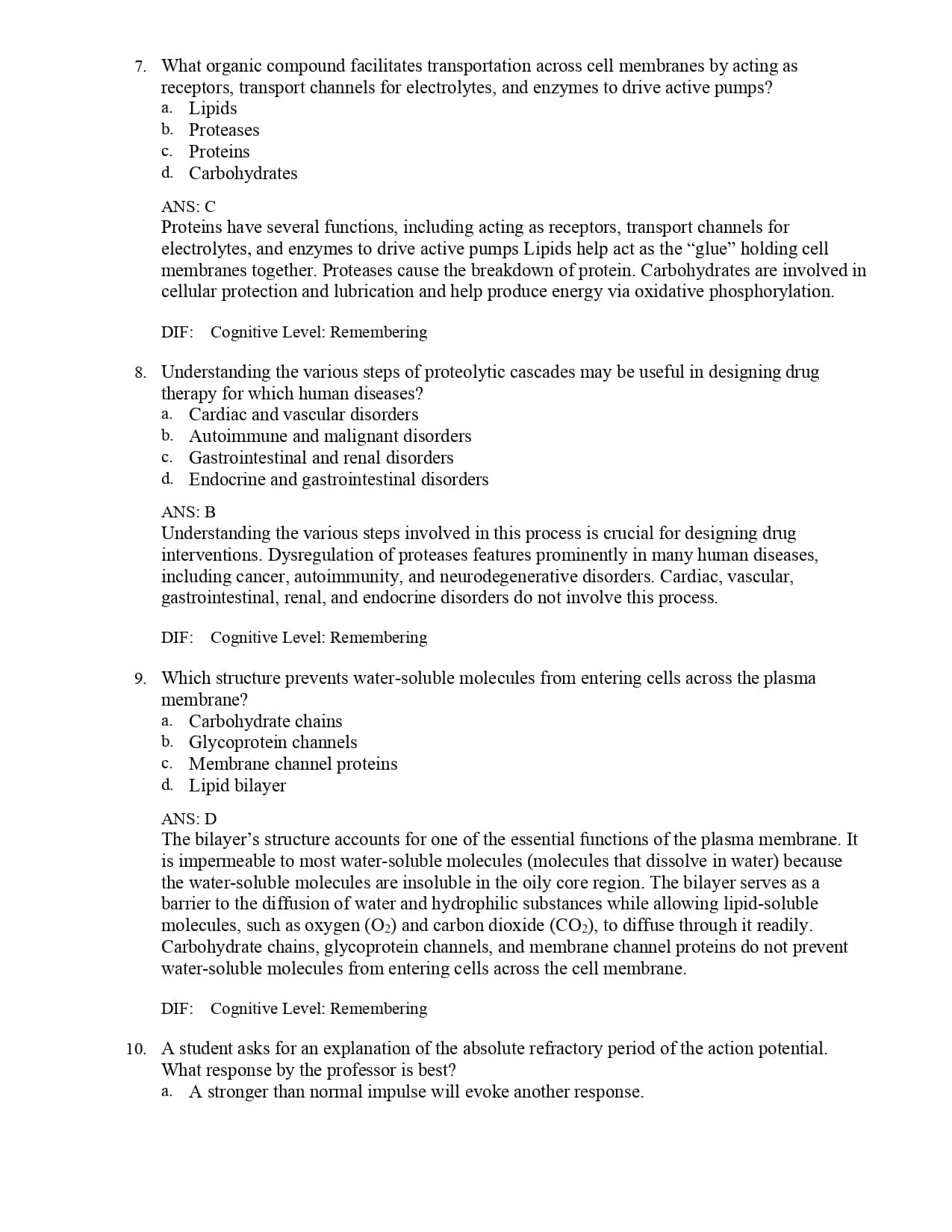McCance & Huether’s Pathophysiology 9th Edition Test Bank PDF
$26.00 Original price was: $26.00.$23.00Current price is: $23.00.
Strengthen your knowledge of pathophysiology with the McCance & Huether’s Pathophysiology: The Biologic Basis for Disease in Adults and Children, 9th Edition Test Bank by Julia Rogers. This instant PDF download provides hundreds of NCLEX-style questions with detailed rationales, organized by chapter. Perfect for nursing and healthcare students preparing for class exams and the NCLEX.

Description
Instant PDF Download – The McCance & Huether’s Pathophysiology: The Biologic Basis for Disease in Adults and Children, 9th Edition Test Bank by Julia Rogers is an essential study tool for nursing and healthcare students. It includes hundreds of NCLEX-style questions with detailed answers and rationales, organized by textbook chapter for easy use.
Why Choose This Pathophysiology Test Bank?
- NCLEX-style questions: realistic practice items with correct answers and rationales.
- Comprehensive coverage: aligned with all units and chapters of the 9th Edition textbook.
- Detailed explanations: supports deeper understanding of disease processes in adults and children.
- Instant access: download the PDF immediately after purchase—study anytime, anywhere.
Contents of McCance & Huether’s Pathophysiology, 9th Edition
PART ONE: Central Concepts of Pathophysiology: Cells and Tissues
- Unit I: The Cell – 1 Cellular Biology; 2 Altered Cellular and Tissue Biology; 3 The Cellular Environment
- Unit II: Genes and Gene-Environment Interaction – 4 Genes and Genetic Diseases; 5 Genes, Environment-Lifestyle, and Common Diseases; 6 Epigenetics and Disease
- Unit III: Mechanisms of Self-Defense – 7 Innate Immunity; 8 Adaptive Immunity; 9 Alterations in Immunity; 10 Infection; 11 Stress and Disease
- Unit IV: Cellular Proliferation: Cancer – 12 Cancer Biology; 13 Cancer Epidemiology; 14 Cancer in Children and Adolescents
- Unit V: The Neurologic System – 15 Structure and Function; 16 Pain, Sleep, Sensory; 17 Alterations in Cognitive Systems; 18 Alterations of Brain & Nerves; 19 Neurobiology of Psychiatric Disorders; 20 Alterations of Neurologic Function in Children
- Unit VI: The Endocrine System – 21 Mechanisms of Hormonal Regulation; 22 Alterations of Hormonal Regulation; 23 Obesity, Starvation, and Anorexia of Aging
- Unit VII: The Reproductive Systems – 24 Structure and Function; 25 Alterations of the Female System; 26 Alterations of the Male System; 27 Sexually Transmitted Infections
- Unit VIII: The Hematologic System – 28 Structure and Function; 29 Alterations of Hematologic Function; 30 Alterations in Children
- Unit IX: The Cardiovascular and Lymphatic Systems – 31 Structure and Function; 32 Alterations of Cardiovascular Function; 33 Alterations in Children
- Unit X: The Pulmonary System – 34 Structure and Function; 35 Alterations; 36 Alterations in Children
- Unit XI: The Renal and Urologic Systems – 37 Structure and Function; 38 Alterations of Renal Function; 39 Alterations in Children
- Unit XII: The Digestive System – 40 Structure and Function; 41 Alterations; 42 Alterations in Children
- Unit XIII: The Musculoskeletal System – 43 Structure and Function; 44 Alterations; 45 Alterations in Children
- Unit XIV: The Integumentary System – 46 Disorders of the Integument; 47 Alterations in Children
- Unit XV: Multiple Interacting Systems – 48 Shock, MODS, and Burns in Adults; 49 Shock, MODS, and Burns in Children
Sample Questions from McCance & Huether’s Pathophysiology 9th Edition Test Bank
1. Which statement best describes the cellular function of metabolic absorption?
a. Cells can produce proteins.
b. Cells can secrete digestive enzymes.
c. Cells can take in and use nutrients.
d. Cells can synthesize fats.
ANS: C
In metabolic absorption, all cells take in and use nutrients and other substances from their surroundings. The remaining options are not inclusive in their descriptions of cellular metabolic absorption.
DIF: Cognitive Level: Remembering
2. Where is most of a cell’s genetic information, including RNA and DNA, contained?
a. Mitochondria
b. Ribosome
c. Nucleolus
d. Lysosome
ANS: C
The nucleus contains the nucleolus, a small dense structure composed largely of RNA, most of the cellular DNA, and the DNA-binding proteins, such as the histones, which regulate its activity. The mitochondria are responsible for cellular respiration and energy production.
Ribosomes’ chief function is to provide sites for cellular protein synthesis. Lysosomes function as the intracellular digestive system.
DIF: Cognitive Level: Remembering
3. Which component of the cell produces hydrogen peroxide (H2O2) by using oxygen to remove
hydrogen atoms from specific substrates in an oxidative reaction?
a. Lysosomes
b. Peroxisomes
c. Ribosomes
d. Endosome
ANS: B
Peroxisomes are so named because they usually contain enzymes that use oxygen to remove hydrogen atoms from specific substrates in an oxidative reaction that produces H2O2, which is a powerful oxidant and potentially destructive if it accumulates or escapes from peroxisomes. Ribosomes are RNA-protein complexes (nucleoproteins) that are synthesized in the nucleolus and secreted into the cytoplasm through pores in the nuclear envelope called nuclear pore complexes. Lysosomes are saclike structures that originate from the Golgi complex and contain more than 40 digestive enzymes called hydrolases, which catalyze bonds in proteins, lipids, nucleic acids, and carbohydrates. An endosome is a vesical that has been pinched off from the cellular membrane.
DIF: Cognitive Level: Remembering
Frequently Asked Questions
Q1. What is included in the McCance & Huether’s Pathophysiology 9th Edition Test Bank?This test bank includes NCLEX-style multiple-choice questions, case-based items, and rationales for each answer. All 49 chapters of the textbook are covered, from cellular biology to multi-system disorders.
Q2. Who should use this Pathophysiology test bank?It is ideal for nursing, medical, and health sciences students preparing for classroom exams, HESI, ATI, or NCLEX. Instructors can also use it to build quizzes and practice tests.
Q3. Are rationales provided with the answers?Yes. Each question comes with the correct answer and detailed rationales, helping you understand why the correct answer is right and reinforcing key pathophysiology concepts.
Q4. Is this test bank aligned with McCance & Huether’s textbook?Yes. It is designed to follow McCance & Huether’s Pathophysiology: The Biologic Basis for Disease in Adults and Children, 9th Edition by Julia Rogers, chapter by chapter.
Q5. How do I receive the test bank after purchase?You will receive instant digital access to the PDF immediately after checkout. No waiting, no shipping—just download and start studying.
Q6. Can I use this test bank for NCLEX preparation?Absolutely. The questions mirror NCLEX-style formats and cognitive levels, making it an excellent resource for NCLEX prep and other professional nursing exams.
Only logged in customers who have purchased this product may leave a review.
Related products
-
Sale!

Test bank for Stanhope and Lancaster’s Community Health Nursing in Canada, 4th Edition
$26.00Original price was: $26.00.$23.00Current price is: $23.00. Add to cart -
Sale!

Test Bank for Advanced Practice Nursing: Essentials for Role Development, 5th Edition
$26.00Original price was: $26.00.$23.00Current price is: $23.00. Add to cart -
Sale!

Test Bank — Davis Advantage for Understanding Medical-Surgical Nursing, 7th Edition
$26.00Original price was: $26.00.$23.00Current price is: $23.00. Add to cart -
Sale!

Test Bank for Davis Advantage for Basic Nursing: Thinking, Doing, and Caring, 3rd Edition by Leslie S. Treas, Karen L. Barnett & Mable H. Smith
$26.00Original price was: $26.00.$23.00Current price is: $23.00. Add to cart





Reviews
There are no reviews yet.